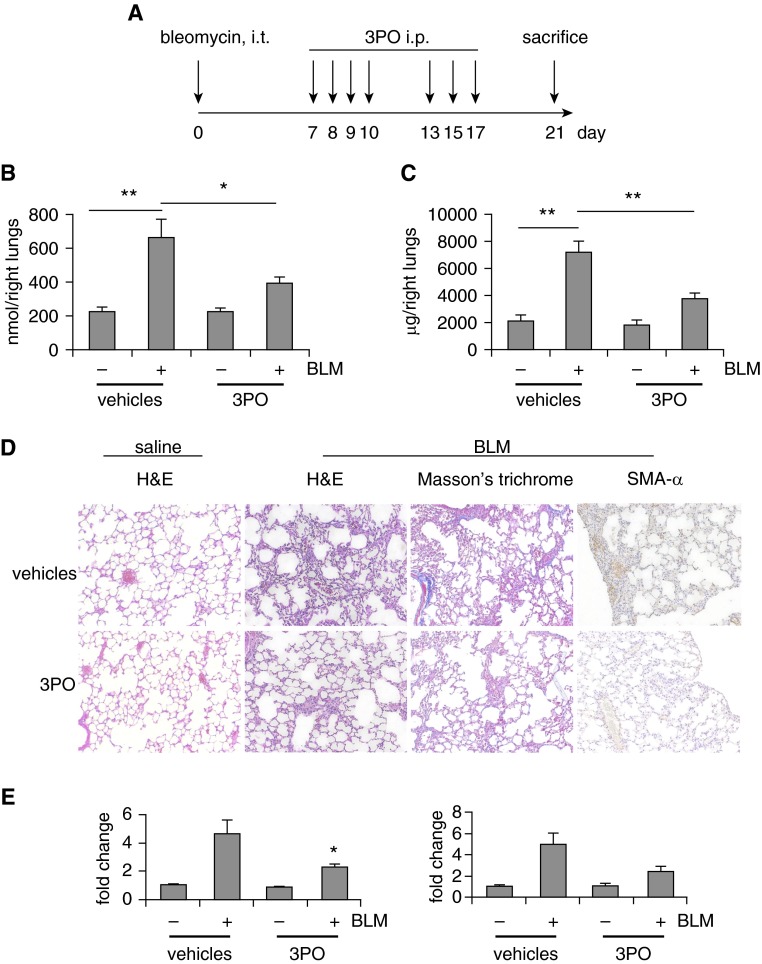Figure 7.
Inhibition of glycolysis therapeutically attenuates bleomycin (BLM)-induced pulmonary fibrosis in vivo. (A) Schematic illustration of the experiment design. C57BL/6 mice were intratracheally (i.t.) instilled with saline or BLM (1.5 U/kg in 50 μl saline). Seven days after the administration, the mice were intraperitoneally (i.p.) injected with 3-(3-pyridinyl)-1-(4-pyridinyl)-2-propen-1-one (3PO) (50 mg/kg dissolved in 50 μl dimethyl sulfoxide) or dimethyl sulfoxide for seven times within 2 weeks. At the end of the treatment, mice were killed and lungs harvested. (B) Lactate contents in the lungs from the experiments were determined. n = 3, 8, 5, 10, respectively. mean ± SEM, *P < 0.05, **P < 0.01 by one-way analysis of variance (ANOVA) and Bonferroni test. (C) Collagen contents in right lungs were determined by Sircol assay. n = 3, 8, 5, 10, respectively. mean ± SEM, **P < 0.01 by one-way ANOVA and Bonferroni test. (D) Lung tissue sections were prepared from the above experiments. Representative images of hematoxylin–eosin (H&E) staining, Masson trichrome staining for collagen deposition, and immunohistochemistry staining for smooth muscle actin (SMA)-α are shown. Original magnification, ×20. (E) Messenger RNA levels of fibronectin (left) and collagen 1A1 (right) in the lungs in this experiment were determined by real-time polymerase chain reaction. n = 3–10, mean ± SEM, *P < 0.05 by one-way ANOVA and Bonferroni test.

